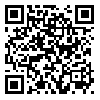Volume 6, Issue 23 (2013)
LCQ 2013, 6(23): 171-190 |
Back to browse issues page
Download citation:
BibTeX | RIS | EndNote | Medlars | ProCite | Reference Manager | RefWorks
Send citation to:



BibTeX | RIS | EndNote | Medlars | ProCite | Reference Manager | RefWorks
Send citation to:
.. LCQ 2013; 6 (23) :171-190
URL: http://lcq.modares.ac.ir/article-29-9641-en.html
URL: http://lcq.modares.ac.ir/article-29-9641-en.html
Abstract: (7392 Views)
According to epistemological theories of islamic thinkers,there are three ways toget tocognition: sensorial ,intellectual and intuitive. However, some scholars do not recognize the third at all. Matoridi theologian, Aboomo'in Nasafi, believes that three things are needed to gain insight into: 1 - Intact senses 2 - True news 3 - Wisdom" (Nasafi, 1990: 24). But Sufis in addition to believing in the intuitive cognition, daresay that it is higher than the other two. Islamic theologians instead of using the term "intuitive cognition" profit from the word "Ilham" which is meant to "Inspiration".Can one claim that Attar Neishaburi as a sufi has presented his own epistemology? Shafie kadkani based on this verse of Attar's Divine book, i.e: Language of science boils sun-like Language of cognition is eternal dumb. believes that "scientific language" is a language which is clear and unambiguous and language of cognition is ambiguous criteria. In Shafie's opinion these two terms of Attar is comparable with the terms "referential language" and "emotional language" adopted by Richards, English critic. This paper will show that: 1 – Shafie's description is inaccurate. 2- His mistake caused the wrong comparison between Attar's views and Richard's critical comments. 3- With the rejection of Shafie's claim we find that Attar has not provided a new comment in the field of epistemology
Keywords: v
Article Type: Book Review |
Subject:
Literary Theory
Received: 2013/07/23 | Accepted: 2013/08/16 | Published: 2013/09/23
Received: 2013/07/23 | Accepted: 2013/08/16 | Published: 2013/09/23
| Rights and permissions | |
 |
This work is licensed under a Creative Commons Attribution-NonCommercial 4.0 International License. |







